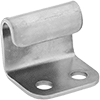Filter by
Weight Capacity
Pin Diameter
Application
Fitting Type
Finish
Attachment Type
Pin Type
Thread Size
Wire Rope Diameter
Color
Specifications Met
Export Control Classification Number (ECCN)
DFARS Specialty Metals
Material Handling
Safety Equipment
Communication

















































































